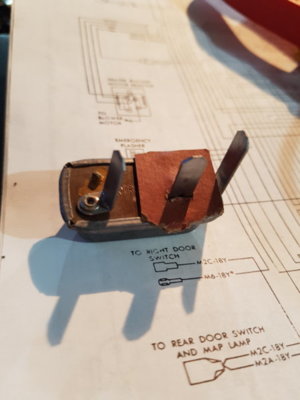Mark1972
Well-Known Member
The instrument voltage limiter out of the back of the dash on my 1970 Plymouth Satellite. According to the wiring schematic, I should be getting 5v to the wire(dark blue) that leads to the fuel sending unit. I was getting 5v, but it was pulsing. From zero to 5 every half a second or so. Then after a few minutes nothing. Dead. I pulled this out and tested it. I put 12.3v into the 12v prong, grounded it to the car body, and tested the 5v prong. It put out 12.3v. It should have dropped to 5v I assume. Also, ohms are 60 from ground to 12v prong, 60 from 12v to 5v prong, and no continuity from ground to 12v. Even if the limiter is screwed and putting out 12v instead of the proper 5, should it not of showed 12v at the dark blue wire at the body plug? I just want to make sure this is the issue before I order a new one. As always, thanks again for the help. Hoping to finally hear it run by Sunday.


















